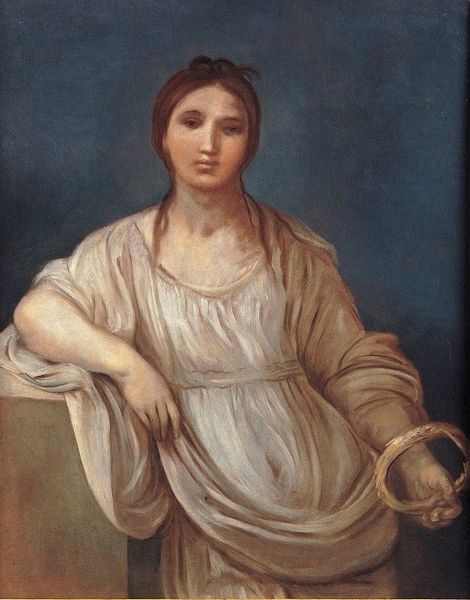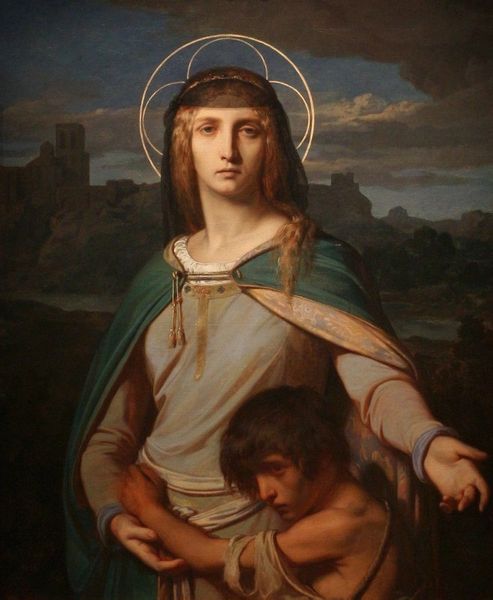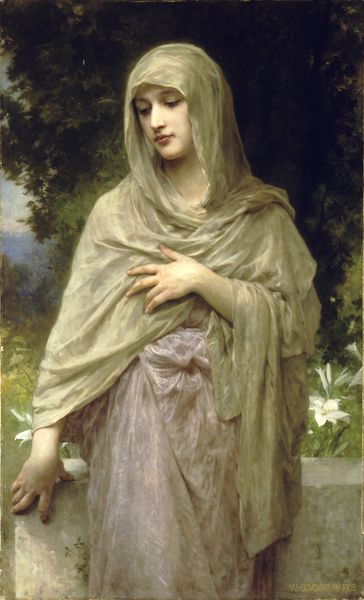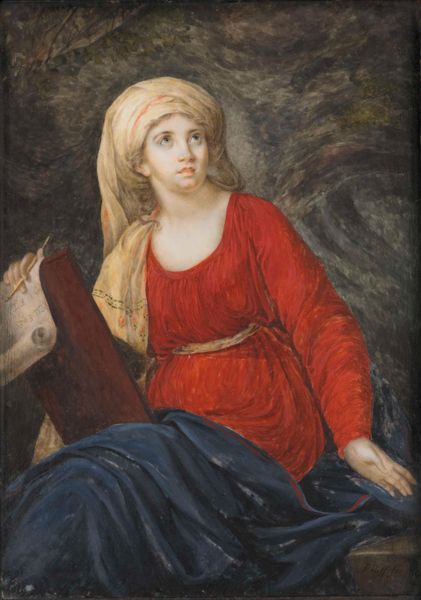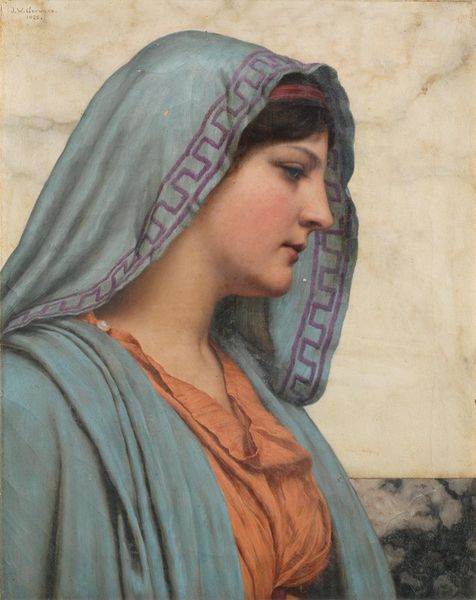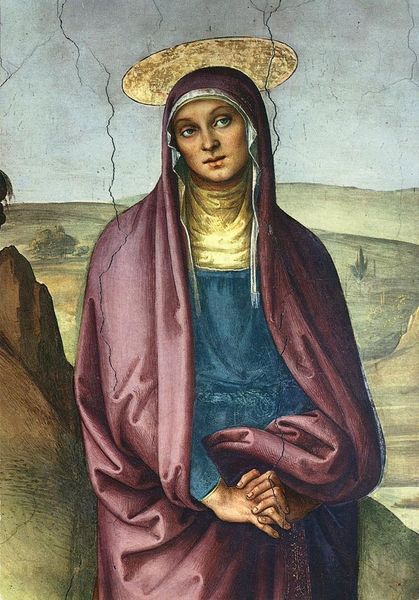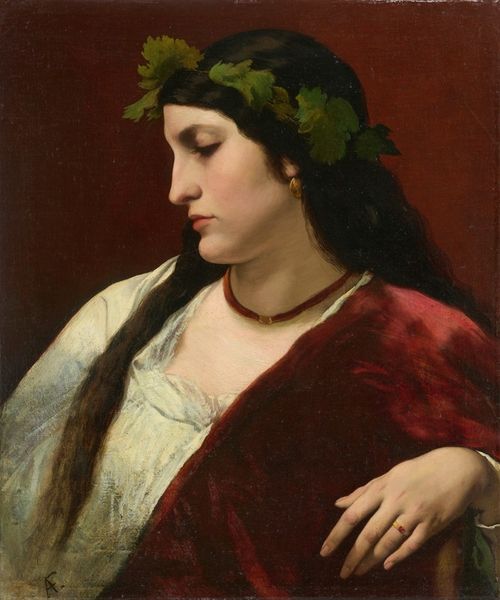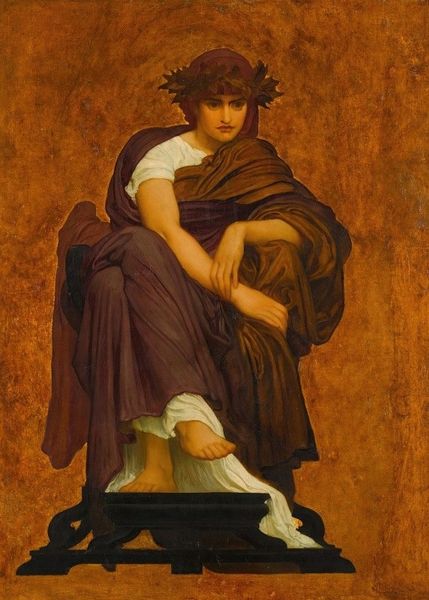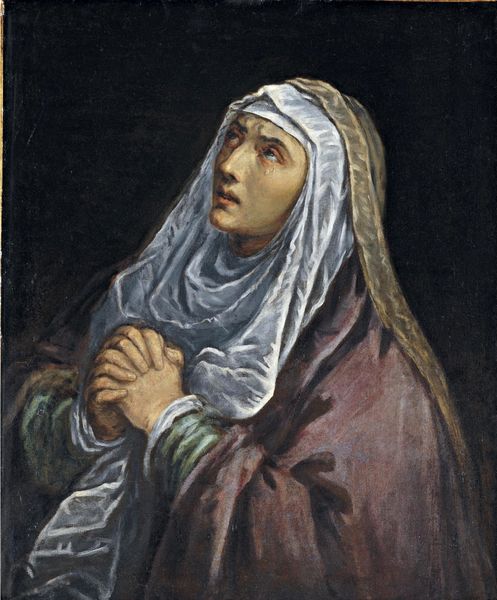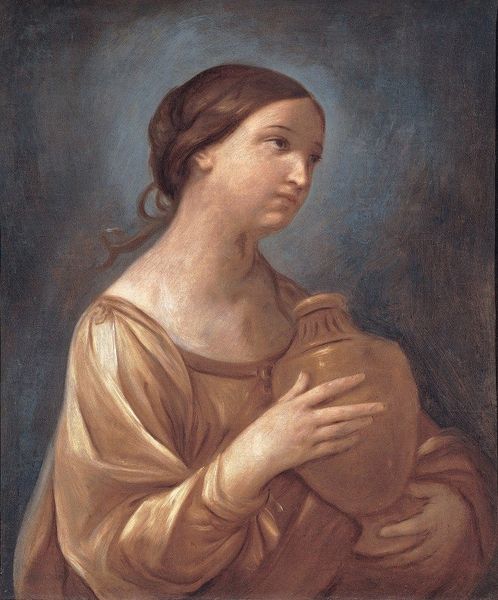
Copyright: Public Domain: Artvee
Editor: Here we have Arnold Böcklin's "The Muse Clio," painted in 1875 using oil paint. I'm struck by the stark contrast between the ethereal cloud and the dark background. What elements of the composition stand out to you? Curator: The immediate visual interest lies in the juxtaposition of textures and forms. Consider the smooth, almost porcelain quality of Clio's skin against the draped fabric of her robes, further contrasted by the nebulous form of the cloud. Böcklin masterfully uses impasto to create tactile qualities. Note, especially, how light reflects across the surface of the white cloth versus the matte of the green fabric. The subject’s face looks rather modern in construction. Editor: The varying texture you mention enhances her figure. Do you think the fact that her arm intersects the writing board is relevant to the image overall? Curator: Decidedly so. Observe how the composition creates a planar dynamic through Clio’s arm as she positions herself and interrupts that rectangular object with an oval form, the cloud below and behind. How the board interacts with her positioning seems unnatural. It draws a division while simultaneously being one singular plane to receive a mark from her pencil in her left hand. Editor: Interesting perspective. Seeing how the plane both intersects and highlights adds to the feeling of her presence sitting. Curator: Precisely. And how do you now see her presence and position as you analyze it? Editor: I'm beginning to notice this division brings to my awareness Clio’s active choice to observe a blank slate that is primed and ready. Now it appears, she is the muse! Thank you! Curator: Indeed. By parsing through texture and forms, and planes we begin to unearth hidden, richer relationships within an artistic system. This illuminates, does it not?
Comments
No comments
Be the first to comment and join the conversation on the ultimate creative platform.
